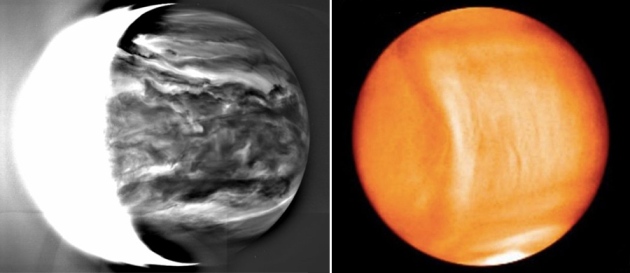Japanese probe "Akatsuki" began to transmit data about Venus

Photo: ISAS / JAXA
The Japanese Akatsuki probe has a rather complicated "fate." Initially it was assumed that the device would enter the orbit of Venus back in 2010. But the maneuver of going into orbit of the planet ended in failure, the device did not go into orbit. Scientists from JAXA on September 7, 2011 tested the probe engines. As a result, it turned out that their capacity is less than 1/8 of the planned. Scientists believed that with the best possible course of events, if it were possible to bring the engine to control the orientation to work, then in December 2015 Akatsuki would be able to go to a long-period (90 days) orbit around Venus. An attempt to put the Akatsuki probe into an elliptical orbit around Venus was scheduled for December 7, 2015. On this day, the device was able to successfully reach a given orbit, as reported on Geektimes .
The current orbit of the probe allows the device to make one revolution around Venus once every 10 days and 12 hours. The orbit of the apparatus is very elongated. "Akatsuki" moves closer to Venus at a distance of 4,000 kilometers at the nearest point and is 370,000 kilometers away from it at the most distant point. Immediately after going into orbit, the device took several photos of Venus . But only now began the transfer of scientific data about the planet. So, the probe transmitted information about the dynamics of the acid clouds of Venus.

')
In particular, Akatsuki transmitted a photograph of dense layers of clouds of sulfuric acid, which was made from a distance of about 100 thousand km from the surface of the planet. The picture was taken using an LIR infrared camera.
The photo shows an unusual structure, the shape of which resembles a bow. According to experts, clouds can take this form, moving from one pole of the planet to another. If, moreover, the atmosphere of Venus rotates faster than the solid part of it, then the clouds, apparently, “synchronize” with the surface, and not with the atmosphere.
Japanese scientists report that the device is now in very good condition, and its entire system is operating normally. The study of Venus continues, so that soon we will be able to learn something new about the neighboring planet.
Source: https://habr.com/ru/post/392927/
All Articles